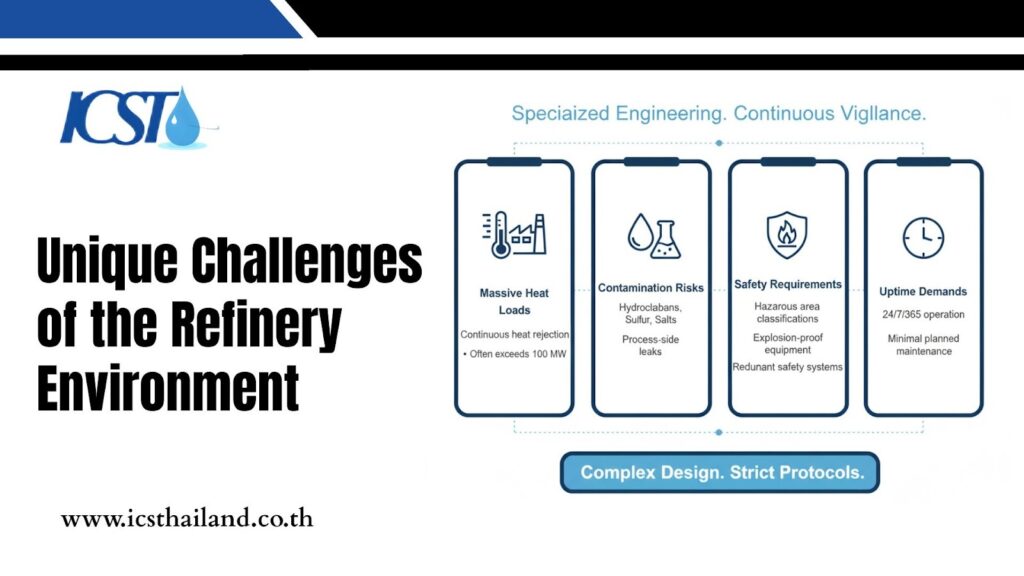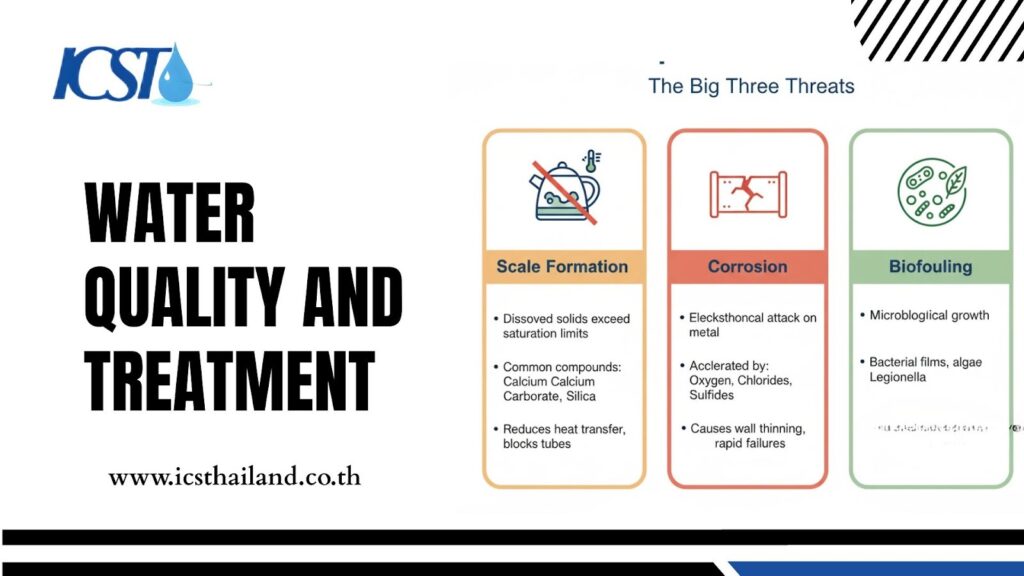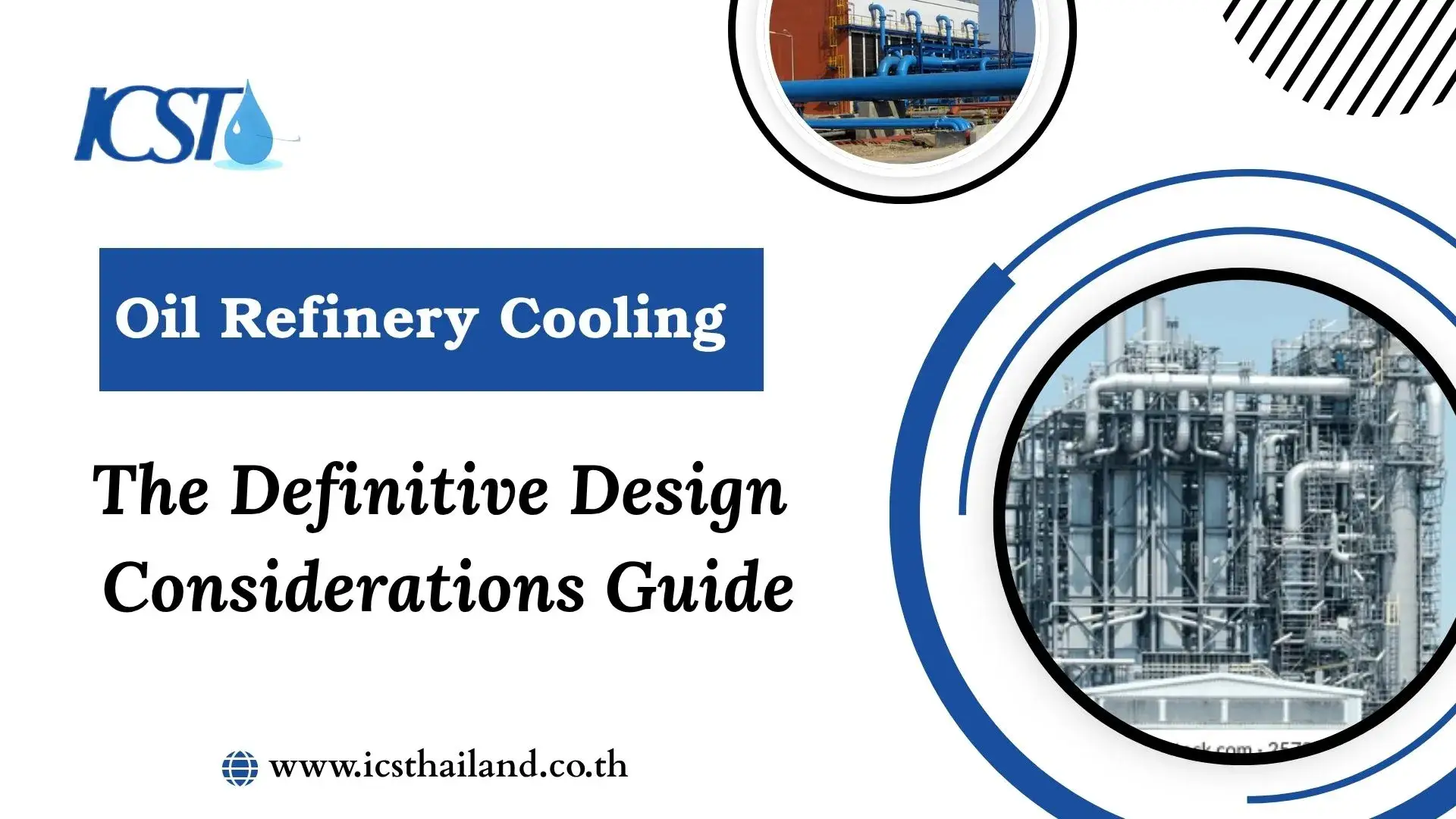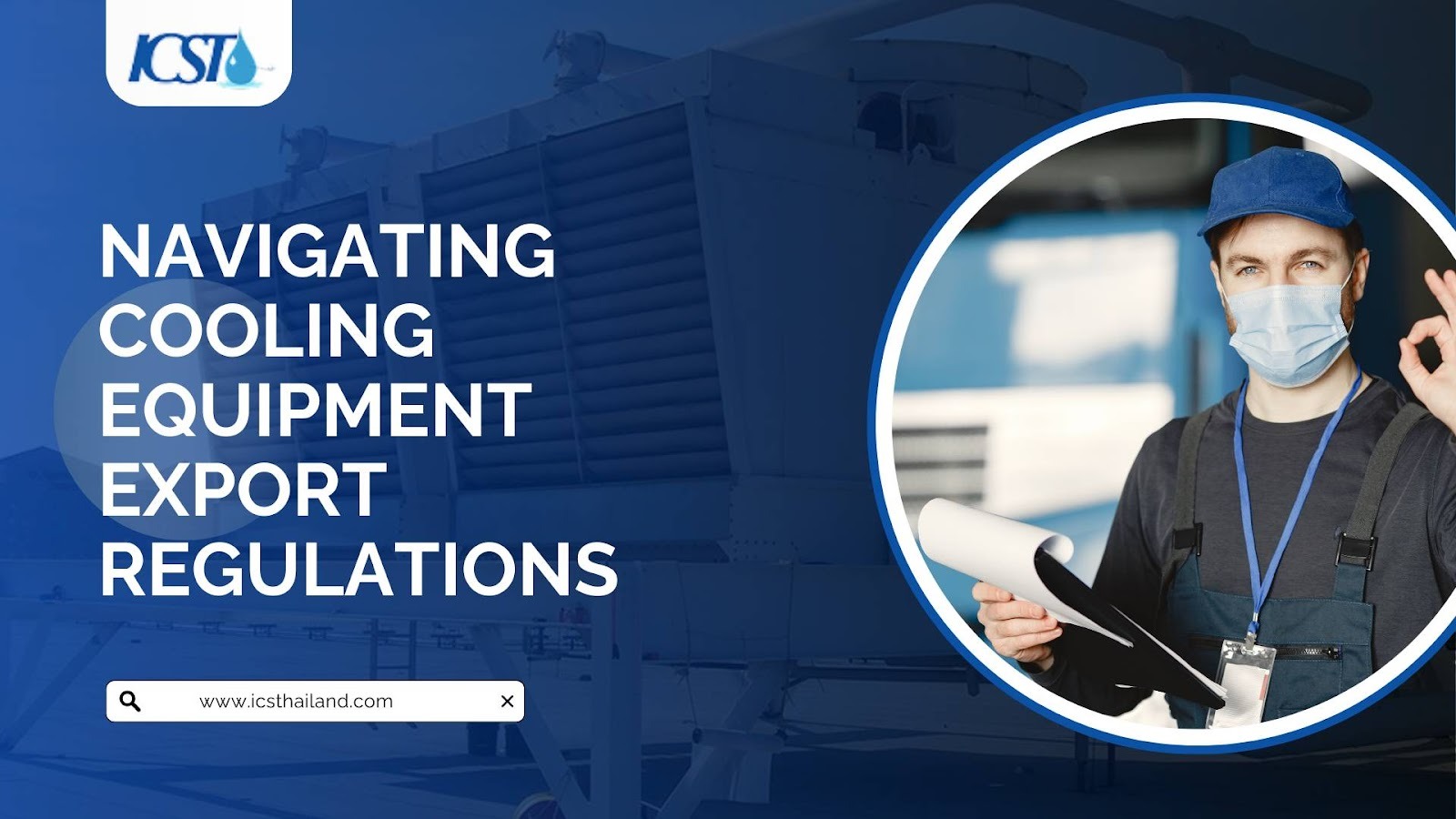What’s the unseen force preventing catastrophic meltdowns in the demanding world of oil refineries? It’s effective heat management. Refinery operations generate immense heat, and without robust Oil Refinery Cooling systems, facilities face devastating production shutdowns, equipment failures, and massive financial losses.
This isn’t just about comfort; it’s about survival and profitability. Modern refineries churn through thousands of barrels daily, creating heat loads that demand expertly designed cooling infrastructure.
This comprehensive guide will dissect the critical design considerations that build reliable, efficient cooling systems, empowering engineers and decision-makers to safeguard operations and deliver long-term value.
Table of Contents
ToggleThe Criticality of Cooling in Refining
The Role of Cooling
Refinery cooling systems are indispensable, acting as the operational backbone by meticulously controlling critical process temperatures. This precision is vital for maintaining product quality, ensuring efficient operations, and preventing catastrophic failures, directly impacting profitability and safety.
Their criticality is defined by their ability to:
- Control critical process temperatures: Essential for stable and efficient refinery operations.
- Enable precise fractionation: Ensures accurate separation in distillation columns.
- Maintain product specifications: Guarantees consistent quality across process units.
- Prevent catastrophic system failures: Mitigates risks associated with excessive heat buildup.
- Support process control: Upholds specific temperature profiles throughout the facility.
Unique Challenges of the Refinery Environment

Beyond the sheer scale and complexity, what truly sets refinery cooling systems apart in terms of design and operational demands? What are the inherent difficulties that demand specialized engineering and continuous vigilance?
- Massive Heat Loads: Continuous heat rejection requirements that often exceed 100 MW for large facilities
- Contamination Risks: Process-side leaks introduce hydrocarbons, sulfur compounds, and salts into cooling water
- Safety Requirements: Hazardous area classifications demand explosion-proof equipment and redundant safety systems
- Uptime Demands: 24/7/365 operation requirements with minimal planned maintenance windows
These factors create a complex design environment where standard HVAC approaches prove inadequate. Engineers must account for both normal operations and emergency scenarios while maintaining strict safety protocols.
Cooling System Technology Selection & Application
Wet Cooling Towers (Evaporative Systems)
Evaporative cooling towers offer the highest thermal efficiency for most refinery applications. They achieve approach temperatures within 5-10°F of ambient wet bulb conditions while requiring relatively modest capital investment compared to air-cooled alternatives.
However, these systems consume significant quantities of water and require sophisticated treatment programs. Makeup water rates typically range from 1-3% of circulation flow, depending on cycles of concentration and environmental conditions.
Key applications include:
- Central utility cooling for general plant services
- Heat exchanger cooling for mixed-temperature loads
- Compressor cooling where water availability supports operations
Air-Cooled Heat Exchangers (Fin Fan Coolers)
Air cooling eliminates water consumption while reducing maintenance complexity. These systems excel in water-scarce regions or where cooling water treatment costs become prohibitive. Fan-driven airflow provides reliable heat rejection without chemical treatment requirements.
The trade-offs include higher approach temperatures, typically 20-40°F above ambient dry bulb conditions. Power consumption for fans can be substantial, and larger plot areas are required to accommodate the equipment.
Optimal applications include:
- High-temperature process cooling where temperature differentials overcome efficiency penalties
- Remote locations without reliable water sources
- Environmentally sensitive areas where water discharge restrictions apply
Hybrid/Closed-Loop Systems
Critical equipment often benefits from dedicated closed-loop cooling circuits that isolate sensitive components from potential contamination. These systems use clean water or specialized heat transfer fluids in closed circuits cooled by either wet towers or air coolers.
Key applications for these systems include:.
- Cooling critical process equipment where isolating sensitive components from potential contamination is crucial.
- Protecting valuable machinery in environments with poor external water quality.
- Data centers and other facilities with sensitive electronics require stable and clean cooling.
- Situations demanding precise temperature control and high uptime for mission-critical systems.
Core Design Considerations for Reliability and Efficiency
Thermal Design and Sizing
Proper sizing requires careful analysis of peak conditions and future expansion requirements. The “design day” concept establishes worst-case ambient conditions for sizing calculations, typically using 1% exceedance values from historical weather data.
Approach temperature selection represents a fundamental economic trade-off between capital and operating costs. Tighter approaches reduce system size but may compromise reliability during extreme weather events.
Critical sizing factors include:
- Peak ambient conditions for worst-case performance scenarios
- Fouling factors that account for heat transfer degradation over time
- Future expansion requirements that may increase heat loads
Material Selection for Corrosive Service
Material selection directly impacts system reliability and life-cycle costs. Process fluid characteristics, cooling water chemistry, and ambient conditions all influence corrosion rates and failure mechanisms.
Heat exchanger materials range from carbon steel for benign services to exotic alloys for severe conditions. Stainless steel grades 304 and 316 handle most refinery applications, while duplex stainless steels provide enhanced chloride resistance.
Cooling tower structures must withstand both process environment and weather exposure:
- FRP construction offers corrosion resistance at a moderate cost
- HDPE components provide chemical resistance for aggressive services
- Concrete structures deliver maximum durability for large, critical installations
Layout and Location
Strategic equipment placement prevents performance degradation and ensures safe operations. Hot air recirculation can reduce cooling tower efficiency by 10-20% when exhaust air mixes with intake air.
Hazardous Area Classifications.
Hazardous Area Classifications dictate stringent equipment designs and installation practices to ensure safety in environments with flammable atmospheres.
All electrical components, such as fans and motors, must comply with explosion-proof standards and meet ATEX, NEC, or IEC regulations, as determined by a thorough facility risk assessment.
Layout considerations include:
- Prevailing wind patterns that affect air circulation and drift
- Process equipment proximity for efficient piping and emergency access
- Maintenance accessibility for major component replacement
Water Quality and Treatment: The Operational Lifeline

The Big Three Threats
Cooling water systems face three primary failure mechanisms that can rapidly destroy equipment and halt operations. Understanding these threats guides treatment program design and monitoring strategies.
- Scale formation occurs when dissolved solids exceed saturation limits in heated water. Common scale-forming compounds include calcium carbonate, calcium sulfate, and silica. Scale deposits reduce heat transfer efficiency and can completely block tube passages.
- Corrosion attacks metal surfaces through electrochemical reactions accelerated by dissolved oxygen, chlorides, and sulfides. Uniform corrosion causes gradual wall thinning, while localized pitting can cause rapid failures.
- Biofouling results from microbiological growth that creates insulating layers on heat transfer surfaces. Bacterial films, algae mats, and more serious threats like Legionella pneumophila require aggressive control measures.
Key Water Treatment Strategies
Successful treatment programs address all three threat mechanisms through integrated chemical and physical approaches. Cycles of concentration optimization balance water conservation against scaling potential by controlling dissolved solids buildup.
Blowdown rates typically range from 0.5-2% of circulation flow, depending on makeup water quality and treatment effectiveness.
Essential treatment components include:
- Scale inhibitors that prevent precipitation at saturation conditions
- Corrosion inhibitors that form protective films on metal surfaces
- Biocides that control microbiological growth through oxidizing and non-oxidizing mechanisms
Energy and Environmental Optimization
Water Conservation
Water scarcity and discharge regulations drive conservation initiatives that reduce operating costs while meeting environmental requirements. Advanced treatment techniques enable higher cycles of concentration by preventing scale formation at elevated dissolved solids levels.
Side-stream filtration removes suspended solids that would otherwise require blowdown for control. Filtration rates typically equal 5-10% of circulation flow to maintain acceptable solids levels.
Proven conservation strategies include:
- Advanced scale inhibitors that enable 6-8 cycles of concentration
- Automated blowdown control based on conductivity or other indicators
- Process water reuse from treated wastewater streams
Energy Efficiency
Fan and pump power represent major operating expenses that can be optimized through advanced control strategies. Variable frequency drives match equipment operation to actual cooling demands rather than running at fixed speeds.
Energy optimization opportunities include:
- Demand-based fan control that responds to cooling load and ambient conditions
- Pump system hydraulics designed for minimum pressure drop
- Heat integration studies that reduce overall cooling requirements
Final Thoughts
Effective refinery cooling systems are crucial for sustained, efficient operation. We’ve covered key aspects like robust thermal design, strategic material selection, and advanced water treatment techniques, including sophisticated scale inhibitors and automated blowdown control.
Energy efficiency is crucial in oil refinery cooling, achievable through optimized fan control and smart pump hydraulics. Getting these elements right prevents costly downtime, ensures regulatory compliance, and boosts overall plant reliability. For long-term value and peak performance in oil refinery cooling systems, partnering with experienced engineering firms is essential.
Ready to optimize your refinery’s cooling infrastructure? Visit the ICST website for expert guidance and proven solutions tailored to your specific operational needs. Let’s ensure your system performs optimally.
Frequently Asked Questions
Which three cooling systems dominate refineries?
The three primary choices are Wet Cooling Towers (for peak thermal rejection), Air-Cooled Heat Exchangers (ideal when water is scarce), and Closed-Loop Systems (used for isolating critical, sensitive process streams).
Why use wet towers over air coolers?
Wet towers deliver lower process temperatures by utilizing the ambient wet bulb, maximizing thermal efficiency.
How do systems reduce water loss?
They use Drift Eliminators to capture water droplets and implement high Cycles of Concentration.
How do we save fan and pump energy?
By installing Variable Frequency Drives (VFDs), which adjust motor speed to match the cooling demand.
What are Cycles of Concentration (COC)?
COC is the ratio of dissolved solids in the circulating water versus the makeup water. Achieving higher COCs means the system consumes less freshwater and minimizes discharge, directly contributing to water conservation.
What is hot air recirculation?
It occurs when the cooling tower’s hot, moist exhaust plume gets immediately drawn back into its intake. This raises the intake temperature and humidity, which can reduce tower efficiency by up to 20% if not addressed by proper layout.







